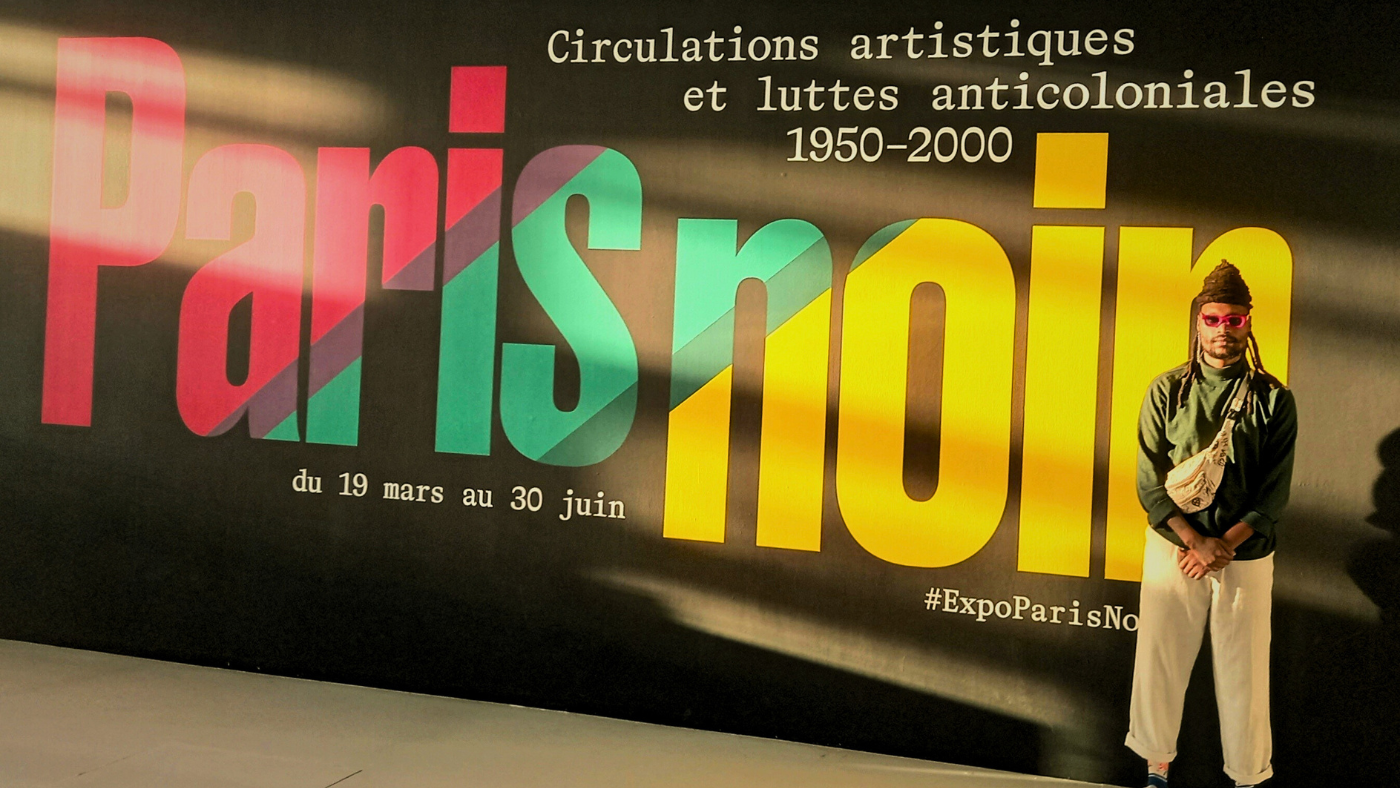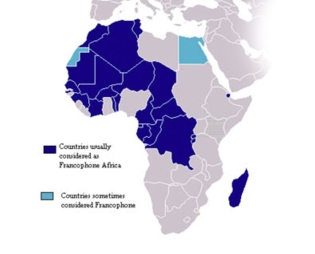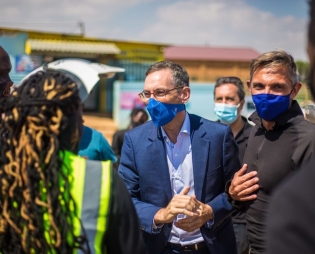I have always watched and read lectures about European art, specifically the time periods of Claude Monet, Vincent van Gogh, and the later period of Picasso. Of course, viewing the artworks on screen is very limited. I couldn’t engage the artworks fully. This wonderful residency to Paris provided me with the opportunity to engage in European art physically. On my arrival, I had the privilege of attending Art Paris at the Grand Palais. Of course, the venue was beautiful and interesting with its long history from the 1800s. The booths were so many, I had to return the following day. What I like about Paris is it is a walkable city and for cyclists. The metro train is easy and safe to travel with.
On my first day, I had to take a Metro from Hôtel de Ville to Champs-Élysées. I struggled a bit loading the Metro card, buying it, and all the Metro signs were in French, but I already knew how to spell “exit” (sortie) and “entrance” (entrée), so that helped a bit.
I am trying to remember which was the first museum I visited. I was warned by my fellow artists-in-residence about how it gets packed on the weekends, and how big it is. You need almost two to three days to take in the amount of work in the exhibitions of The Louvre. It was not ideal for me to start there, but I witnessed four Asian brides taking photos outside of the museum, which was interesting to me because you don’t see brides outside museums in South Africa.
Since the announcement of my award and travel to Paris, I made a list of artists and artworks I wanted to see. If I remember correctly, this included artists such as Claude Monet, Suzanne Valadon, Vincent van Gogh, Henri Matisse, and Pablo Picasso, just to name a few. I believe the Picasso Museum was the first one I went to. I was lucky enough that there was also a temporary exhibition of German art that was considered “Degenerate Art” (a term created by the Nazi Party). Interestingly enough, my studio was located on the same street as the Holocaust Memorial (Mémorial de la Shoah). They had many events at the memorial, but the one that stuck in my memory is the one they had with a speaker playing. I don’t know if it was pre-recorded, but the speaker kept on announcing names and surnames (the names were also engraved on the brick walls outside of the memorial building) of all those who were killed in the Holocaust, and this announcement played day and night for almost a week. I felt emotional about this symbolic gesture. I was not just pained about the people who suffered the Holocaust, but I was also thinking and relating the experience to my native land of South Africa—about how little or nothing has been done to keep the spirit of the people who sacrificed their lives to fight against the oppression of colonial-apartheid.
It was interesting to see how serious and respectful people in Paris were to artists—not just to visual artists but any form of art. There’s a level of respect for the sector, maybe because they have all the long history of museums and artworks from century to century. People learn and understand art as a way of life and culture. I enjoyed my visit to the Musée de l’Orangerie. The Bourse de Commerce – Pinault Collection was interesting to witness. I still can’t believe that it’s someone’s personal collection. South African artworks I saw there were William Kentridge’s cut-outs on the stairs, and his video art, as well as Philip Guston’s Lamp (1974). Most of the collection comes from Africans in America, such as Kara Walker, Kerry James Marshall, just to name a few. There was a wonderful playlist of sounds that included the music of Nina Simone’s Black is the Color of My True Love’s Hand, and Louis Armstrong’s (What Did I Do to Be So) Black and Blue. But my greatest highlight of museum visits is going to the Centre Pompidou. It was never on my list to visit. One night I was walking on the streets of Paris, outside a café/bookstore, through the window I saw a book catalogue of the exhibition Paris Noir. The cover was of a self-portrait of Gerard Sekoto, painted in 1947. The self-portrait was the one that attracted me to the book. I tried to read the back cover, because it was sealed and I couldn’t open it. Of course, I struggled because it was all in French. Google Translate helped me to understand the text fully, and that’s how I found out about the museum and the exhibition. The following day, I dedicated my morning to view the exhibition. There were five exhibitions at the same time. I told myself I have to start at Paris Noir. I spent the whole day, and lucky enough the museum that day was closing at 9:30 p.m. It was still not enough time to engage with the masters, who never surrendered or cowered to stand against injustice.
It was a privilege to witness the works of Ernest Mancoba. I never imagined that I would see his work for the first time in France. That’s an unbelievable dream for a boy who was born in a township east of Johannesburg. The first painting I witnessed of Gerard Sekoto’s was Street Scene (1945) at Iziko Museum. In my head, the painting was big, and I was surprised by the size of it, but I was also still motivated and impressed by the brush marks and the way he layered paint and his choice of colours. But the self-portrait that I witnessed at the Centre Pompidou made me emotional—looking at the man who persevered to achieve his dream in the 1940s to be in the centre of the art scene, which was Paris at that time. Of course, it was hard for him to survive, but he persevered and paved the way for artists such as myself to create a link between South Africa and France. Because of his dream, I was able to be in Paris for the wonderful three months of my life. This self-enrichment made me realise the fundamental truth that I am born of the people who are heroes and heroines. I am born of the people who would not tolerate oppression, and this gives me strength to navigate the harsh reality of post-apartheid South Africa.
I want to give thanks to the French Institute of South Africa (IFAS), Absa, and the South African National Association for the Visual Arts (SANAVA) for making my trip possible. This residency reminded me that I come from a great lineage of masters who sacrificed and resisted for many years, paving the way for young artists like myself. Thank you to everyone for the wonderful support and partnership between Absa and IFAS for making this award possible, and the wonderful people of Cité internationale des arts for making the residency welcoming and easy.






Problem displaying Facebook posts.
Click to show error